|
By Anne Sheehy I’ve lived in cities (or, more accurately, suburbia) for the vast majority of my life. When I wasn’t living in a “bustling” suburb, I was living in downtown Ottawa with two roommates. Social, noisy, car-filled life is what I am used to. That’s why, when I moved to Cardiff, Wales to be with my now-husband, I was unsure about our living situation – he had a house on the edge of the city, near rolling farmland and windy country lanes. I was moving directly from the Ottawa city centre, and I was anxious about what living in this quiet little house would mean for me. At first, it was challenging. Making new friends meant long bus rides into the city, and long bus rides back. Going to the movies was a full day event if I was going on my own, and last minute meetups downtown were out of the question. I asked my husband if we could move somewhere - anywhere - in Cardiff that had more...well...life. Stuff. Noise. It was something I thought a lot about. That is, until, COVID-19 hit. When we were told that we could leave our homes for emergencies and one daily form of exercise, everything changed. Gone were my solo trips into town on a Sunday for something to do, gone were afternoon teas by Cardiff Castle with friends. My favourite little pizza restaurant shut its doors indefinitely and our favourite tea room pulled down the shutters. I hadn’t (and still don’t have) a clue as to when I could go back to see my family in Canada. I felt frozen, stuck indefinitely in my house, an ocean away from so many people I love. What then presented itself to us was an opportunity to discover the world lurking just beyond our doorstep. Instead of the Madeira ultramarathon that my husband had planned to do in May, he started discovering new trails to run in the countryside near our home. Instead of bus trips into the city, I spent hours reading in our back garden (or out front, wherever the sun hit best). The quietness that had bothered me so much initially actually became my solace, my peace, my “new normal”. Hearing about people living in city centres with no greenspace around no longer sounded as appealing. I realized how fortunate we were to have a home so close to nature. It’s a privilege; not a burden. I realized that my neighbourhood is FULL of “life”, of the “stuff” and “noise” that I thought I was missing; they just looked a bit different than I was expecting. The “stuff” is fields, creeks, forests, and trails, and the noise is birds, breeze, and children whizzing by on their scooters and bicycles. It’s a bustling landscape of its own, and I've only just learned how to hear it.
0 Comments
by Meghan Ward This article is Part 2 of a two-part series about finding and contacting a potential graduate supervisor. If you are interested in reading Part 1, you can find it here. Alright, so you have compiled a list of potential supervisors and you are now ready to reach out and contact them. Email is the most common form of communication between a prospective student and a future supervisor. It allows you to spend the time you need to form a professional and thoughtful introduction and gives the potential supervisor room to respond on their own schedule. Here are three key things you should always include when reaching out to a potential supervisor:
In addition to including a strong introduction within the email, I always think it is wise to attach an updated resume and a copy of your most recent transcripts. Including a written cover letter is an option, however it will be dependent upon how detailed your email is. In my own experiences, I wrote an email detailing my experiences, qualifications, and interest and did not include a written cover letter. However, in the conclusion of my email I always offered to send along a written cover letter if the professor would prefer one (in my experience, no professor required this with the first introductory email). The email you write will be dependent upon the type of position you are applying to. If you have found an advertised graduate project (the professor has planned out a project and is looking for a student to fill that specific project) and believe you are suited to the position, you should include specific details in your email highlighting how your experiences fit the project. For example, I applied to this advertised position: Assessing the Potential of Northern Leopard Frog Recovery in Western Canada. When applying for this M.Sc. position, I detailed my academic and professional experience working with herptiles in Canada. I specified the species I worked with, the goals of the research, and how it related to the project I was applying for. When reaching out to a professor who does not have an advertised graduate position available, you should detail the experiences you have as it relates to the overall goals and aims of the research lab. For example, if you are applying to work with a professor whose research aims centre around conservation biology, you can speak to your academic and professional experience in that field. While this field is broad, many of the skills you have learned can be transferred across species and projects. Now that you know how to write, and what to include in an introductory email, it is time to start contacting your potential graduate supervisors - best wishes!
by Jacqueline Weber When I left university after obtaining my Master’s degree, I had never expected to find myself back in school. I found, however, that no part of the year 2020 went as planned, and in September of 2020 I felt very lucky to join the Ecosystem Management Technology program at Fleming College. Although I treasured my university experience, I needed to build a bridge between my transferrable skills and the specific demands of a career in the environmental sector. I’m sure that many other university graduates have felt the same. I believe a college education can be that bridge. In the years leading up to my enrolling at Fleming, I studied Biology at Queen’s University. My Master’s studies helped me develop as a researcher, a project manager, and a technical writer. Alongside my research I pursued the study of biodiversity and natural history, both to feed my curiosity, and to develop skills for a future working in the environmental sector. The post-graduation job hunt, however, did not go quite as planned. I quickly learned that although I had many transferrable skills, my lack of applied field skills and job-specific training made it hard to break into the environmental sector. It was a conversation I had with a fellow attendee at an electrofishing course in September of 2020 that changed the trajectory of my year and put me on the path to a college education. I had been seeking out courses to expand my environmental skillset all summer, but COVID-19 had thrown a serious wrench in those plans! In talking to my fellow electrofishing trainee about his college experience, I learned that many Ontario colleges offer 8-month programs for university graduates, and the college experience sounded like just the sort of applied learning that I needed to build my skills for the environmental sector. Full of questions, I posted on the Emerging Leaders for Biodiversity Facebook group asking about peoples’ college experiences, and responses came pouring in! Many voices chimed in, saying they had travelled a similar academic path as I had; after graduating from university and wanting to expand their job-specific skills, they joined college programs as a way to prepare themselves for a career in the environmental industry. Over and over I heard praise for the programs at Fleming College. Three days after that fateful electrofishing course, I began the application process and soon I was enrolled in the Ecosystem Management Technology program at Fleming College.
I’m hopeful that my remaining four months at Fleming will leave me with valuable technical skills, a widened professional network, and a path to a career where I can put all my skills to use in environmental stewardship, helping to create a better and greener future for the human, plant, and animal residents of Ontario.
by Meghan Ward Finishing up your undergraduate degree is a feat in and of itself, so congratulations! If you are considering continuing on in academia, the next step might be a Master of Science (MSc). Most MSc. degrees are broken into two broad categories: thesis based, and course based. For the purpose of this article, I will be focusing on finding a supervisor for a thesis-based MSc, as that is where my experience stems from. There are a variety of ways to find a potential MSc supervisor. You may have met a potential supervisor while completing your undergraduate degree, while at a conference, or while scrolling on Twitter (I’m not kidding – #ScienceTwitter is a great resource to find like-minded people in your field!). To begin, you will want to have a general idea of the research you wish to pursue. This will make it much easier to find a supervisor, as you can narrow down your search to faculty who study what you are interested in. For example, you are interested generally in conservation, and specifically on the impact of roads on animal mortality rates. Of course, it is totally normal to have more than one research interest! Keep them all in mind when searching through faculty pages. Next, you will want to compile a list of potential universities to attend. I knew that I wanted to remain in Canada for the duration of my MSc, so I compiled a list of 10-15 universities in Canada that I would be happy to attend. This step often confuses students because we are taught to value the research above all else and that the research should be the single defining trait that dictates where we attend graduate school. I disagree. While I do think it is important to pursue a topic that is of interest to you, I also believe that there is much more to a graduate degree than your thesis project. You want to ensure that you are living in an area you enjoy and feel safe in. You will also want to consider tuition costs and MSc stipend payments and the cost of living (i.e. rent, transportation, food, etc.) in different cities. Because of these various factors, I recommend putting just as much weight towards where you go to school as you do when choosing who will supervise you. Now that you have a list of potential universities, you can get to the fun part; finding supervisors! The best way to do this is to find the faculty list within the department of your choosing. For example, if you are interested in conservation you will find the list of Biology professors at your chosen university. Some universities categorize this further by creating distinctions between Evolution and Ecology, Health Science, Environmental Science, etc. Most universities will pair the list of professors with a short biography about their field of research. For example, Laurentian University lists Dr. David Lesbarreres on their faculty and highlights his interest in amphibian conservation, disease ecology, and road ecology. Once you have found a professor of interest, click on their profile! You can now find their personal websites, previous publications, and their contact information. I recommend going through the entire faculty list and keeping track of who you are interested in, what they study, a link to their website, and their contact information. Create something similar to the chart below to keep everything organized: Once you have completed the chart above, you can begin contacting your potential supervisors! Stay tuned for the second part in this series! I will be chatting about drafting the first email you send to potential supervisors, and all the details you should be including.
Applications are now open for a variety of ELB Board of Directors positions! You can self-nominate or be nominated.
Joining the Board will allow you to meet interesting people who will add to your sphere of influence and develop skills important for any career, including: project management, strategic planning, networking, and budgeting. The responsibilities of Board membership include participation in the administration and decision-making for the organization, as well as managing working groups that accomplish ELB's various projects. If you are interested, please submit a maximum 400 word statement of interest that includes a bit about yourself, why you are interested in participating on the Board of Directors, as well as interest and experience in particular responsibilities, and a photo of yourself which may be shared with members for the purposes of voting. Please email a Word document or PDF to [email protected] by March 5, 2021, with the subject line: ELB Board Nomination by Heather Kerrison The holidays are my favourite time of year. The holidays fill people with joy, and deep down we all know that we love giving more than getting, and that is a wonderful thing! Here are four things to consider when planning your holiday celebrations: 1. Buy Local: buying local spreads the seasonal joy to shop owners and helps them also have a happy holiday. Many local businesses source their materials locally, and you are entirely cutting out the process of shipping (and carbon emissions) associated with big brands. Choosing to shop local is a win for everyone, especially in a year that has brought financial hardship to many businesses. Even gift cards to local restaurants (hello, future date night!) is a great way to gift your time and support a local business.
3. Eat Mindfully: again, shopping local is always better. Sourcing as much as you can from local farms and markets greatly reduces the carbon footprint of the food you are buying. You are also supporting local farmers and families! Bring your own bags and grab some veggies that were grown locally. For alcohol, there is no shortage of local breweries and wineries to stock your fridges with! After the meal happens, it is also important to remember to reduce food waste. Food production can be a strain on our environment, and it makes a huge difference to plan appropriately and have all food be consumed or repurposed into leftover dishes. Get creative and make hearty soups that can be frozen and eaten over the winter. 4. Re-purpose your tree: If you typically get a real tree for the season, there are so many ways to re-purpose it after use, so avoid just dragging it out to the curb for pick up! You can easily turn a tree into an animal sanctuary by removing all decorations and placing it outside. You can then even make wildlife-friendly garland out of cranberries, dried cherries and apple slices. Alternatively, you can lay the tree down in the corner of your yard and you’ll notice that wildlife will use it as shelter. There is plenty of opportunity to get creative, such as making wreaths and garland for decorations, or even make a DIY bird feeder out of pinecones. No one is perfect, but if all of us make an attempt to "green" our holidays, the impact will be grand. And after all, this time of year is about spreading cheer.
by Meredith Meeker The Emerging Leaders for Biodiversity Podcast invites you to cozy up with your favourite beverage and sit down to chat with some of the biggest names in the environmental sector. It is backstage access into some of the most competitive and well-known organizations in the game. Basically, it is an opportunity that most people don’t get. The whole purpose of this podcast is to help emerging leaders find their path and make a difference. Listening to different perspectives from within the environmental field can only make us stronger as practitioners. When this whole adventure started, I certainly didn’t know much about how to host a podcast, but the guests have made it easy. Every time I sit down to record an episode with someone, I genuinely can’t wait to hear their answers and learn more about field I have dedicated my life to. Right now my favourite question is about their favourite “Neature” moment (because nature is so neat). Most of the stories are local and it’s a great reminder that even though we might not be able to travel far and wide right now, there is so much to enjoy right in our backyards. In addition to great career advice, we have already touched on some really important themes, including what does meaningful reconciliation in our field look like, how can we make the space more welcoming and inclusive, and how can we prevent emotional burnout that sometimes comes along with the field. These are all important topics that we will continue to dive into in future episodes and seasons.
Not a lot of good has come from the pandemic, but it did allow me to reach out to more people since a lot of us are working from home and have the technology to support a podcast interview. What technology do you need to be a guest on the ELB podcast, you might ask? All you need is a laptop and headphones, preferably with a mic. Email us if you think you would be a great ELB podcast guest! The podcast was definitely out of my comfort zone, but I think 2020 has forced people to shake things up and deviate from our usual routines. I am extremely grateful for the opportunity to host and help create this podcast. I feel like I have learned a lot from the process but even more from the guests. We are only half way in, but I would say the biggest take-away I’ve had from this podcast so far was actually from my first guest Jessica Steiner, from Wildlife Preservation Canada. We talked about the importance on focusing on working on your own piece of the conservation/environmental puzzle, and if each of us can do that and to the best we can on our own piece, we actually allow others to focus on theirs. We will all complete and reach our goals faster and happier. We would love to hear from our members. Are you loving the podcast? Is there someone you would like to see on the podcast? Are we answering your top burning questions? Let us know in the comments below, or email us at [email protected]
By Caitlin Brant Tips for speaking about biodiversity loss in the modern world. Summer is normally conservation’s best season - it’s often when the majority of fieldwork, habitat restoration, and public engagement is done. This year though it feels like conservation and many other non-profits are struggling to adapt. This is because meaningful engagement that leads to action is more difficult to achieve without meeting face=to-face. With that in mind, how can we get people on board with conservation? I have spent most, if not all, of my adult life trying to get people to care about this issue when they might not value it or know very much about it. The answer I’ve come up with is a simple one: respect and listen. The reason why so many conservation efforts fail is due to lack of local involvement. We need to understand the reasons behind people’s behaviour before asking them to do something new. Furthermore, behaviour changes take time; everyone is at a different point in their life and sometimes the best option is to showcase what you do, why you do it, and the benefits of that action. Online discussions often seem to facilitate debate rather than dialogue. Of course debates have their place, but if we are going to engage people in conservation, we will have a greater impact by finding common values and celebrating successes both big and small. It is important to understand many people are not going out of their way to harm wildlife – they were simply not taught about how their actions negatively affect biodiversity.
As youth, it can sometimes be difficult to see beyond our social media newsfeeds but there is a whole world of different opinions out there and each opinion should be valued because someone has used their personal experiences to come to that conclusion. The fastest way to turn someone off a cause is the feeling of being judged or policed. Statements like, “You’re doing something wrong”, or “You are not doing enough” will never result in something positive. Remember that not everyone will do what you consider to be right so try to think about what you can change. Finally, just because our lives have been put on hold doesn’t mean we have to cancel on people. We need people to question our decisions and our values. Learning from others and learning to compromise is essential to the future of conservation. It is also important to consider that news outlets are trying to sell stories that have big, reactive headlines. Now more than ever we need people to highlight positive conservation and community engagement. Why not start a small habitat restoration project at your home or with your community, create bird-friendly windows. or advocate for the monarch butterflies’ right-of-way in your municipality? Show people the real things we can all do to help wildlife. Encourage these actions with an emphasis on why individual actions are beneficial to us, our communities, and the planet. Remember, respect goes both ways and positivity breeds positivity.
by Sara Mak During my first term of university, a few friends talked me into transferring into the co-op program. I’m going to be honest here: at the time, the main reason why I agreed was so that I would be able to graduate with them five years later. I didn’t fully understand what I was getting into or how it would impact me post-graduation. As I stumbled my way through countless job applications, nerve-wracking interviews, and rewarding work terms, I came to appreciate just how valuable my co-op experience was. For me, co-op was an opportunity to explore new places, meet exciting people, and test out career paths without the long-term commitment and expectations of a permanent full-time job. Some highlights of mine include:
Of course, each person’s experience will be vastly different; we each have our own goals and preferences, not to mention the external factors that we may have no control over. As cliché as it is, this is what helps us grow and overcome challenges. And speaking of challenges, there certainly were many! If you’re like first-year-me and wish you had some advice, read on for some pointers I picked up along the way.
As with most things, it may be a bit scary in the beginning, but you’ll be glad you did it! Being a co-op student introduces a new perspective on your studies; you’re able to see how you can apply your course teachings to your job, and vice versa. Five years ago, I had no idea the impact that FOMO and an impulse decision would have on my entire undergraduate experience. Graduating with a more holistic resume and a clearer idea of what kind of career I wanted to pursue made stepping out into the real world a lot less daunting. Having established connections certainly didn’t hurt either. I would highly recommend co-op to anyone interested in participating in a work/study program!
by Heather Kerrison If you’re anything like me, part of the distress that has come along with COVID-19 stems from the rollback in environmental strides that took years to make. Earlier this year, we saw major retailers such as Sobeys banning the use of plastic shopping bags, restaurants banishing plastic straws and coffee shops incentivising the use of personal cups. When Ontario declared a state of emergency earlier this year, many grocery stores banned reusable bags from entering the store and coffee shops stopped allowing customers to use their own mugs. Because single-use items used for personal protection equipment (PPE) are considered “safe”, there has been a massive uptake in the use and of these products and therefore a huge increase in how many are discarded. Of course, frontline workers need to be adequately protected and we all want to slow the spread and do our part. However, it is troubling to think of not only the rollback of “green” habits such as reusable grocery bags and coffee cups, but the combination of that with the uptake in the use of a suite of single use items. Here are 4 ways you can try to keep your habits “green” during this time: 1. Try Using Reusable Grocery Bags: Some grocery stores have not been allowing reusable personal bags to enter the stores or be used at checkout. In some places the employees are just not able to touch the bags, meaning you could seemingly pack your own groceries and still use them. These measures are understandable as the safety of the workers comes first. Some options include bringing the bags (if able) and packing your groceries yourself. If this creates a stressful situation or slows a line, a great alternative is bringing your cart to your car and bagging them there. Personally, I have been able to use a grocer that allows the bags to come into the store and packing the bags myself. Free reusable bags, among other great resources, are available through the Ontario Government website. These double sided bags feature some Ontario Species at Risk. Source: https://www.publications.gov.on.ca/species-at-risk-reusable-bags 2. Shop Local: this could not be more important. Not only are small businesses struggling and need your support, but by buying local goods, you can cut out the emissions needed to transport materials. I know that ordering from Amazon is all too convenient when we are stuck inside, but many local retailers are offering free delivery or pickup options. Products like beer or coffee can often be sourced locally and delivered – a double win! You can support a small business that may be struggling to make ends meet and forego the extra carbon emissions. 3. Eliminate Food Waste: If you are anything like me, the last couple months have rendered you a meal planning whiz. Trying to decrease trips to grocery stores means making a meal plan ahead of time and a grocery list from that. When you operate in this way, you usually end up using all of the food you purchased and less goes to waste. Food waste equates to a massive amount of water and resources that have gone to waste, so let’s avoid that as much as possible! 4. Get, or Make, a Washable Mask: wearing masks in public places is going to be a reality for many of us for quite some time. If you are not a frontline worker, try to stay away from single-use PPE and instead opt for a reusable mask that you can wash after each use. Many shops have started making masks but if you have yet to find a seller in your area, try making one yourself! Source: "Non-medial masks and face coverings: Sew and no-sew instructions". (2020). Government of Canada. Internet: https://www.canada.ca/en/public-health/services/diseases/2019-novel-coronavirus-infection/prevention-risks/sew-no-sew-instructions-non-medical-masks-face-coverings.html It is my deep hope that we can each do our part to keep up with green initiatives that are so important for not only our own well-being, but the well-being of this wonderful planet that we all call home. These are new waters to navigate, but it is imperative that we do our best to maintain environmentally friendly habits. Additionally, in the vast unknown of this unprecedented time, it is nice to feel like you are doing what you can to keep our planet healthy.
|
ELB MembersBlogs are written by ELB members who want to share their stories about Ontario's biodiversity. Archives
January 2023
Categories
All
|

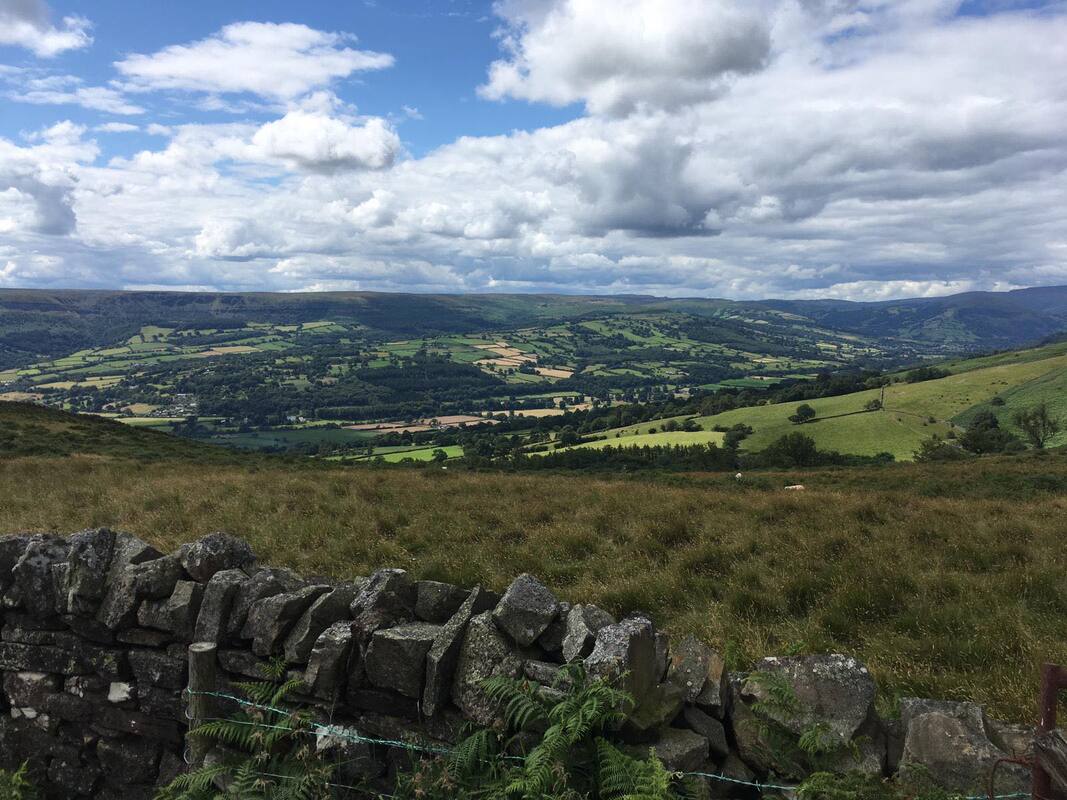


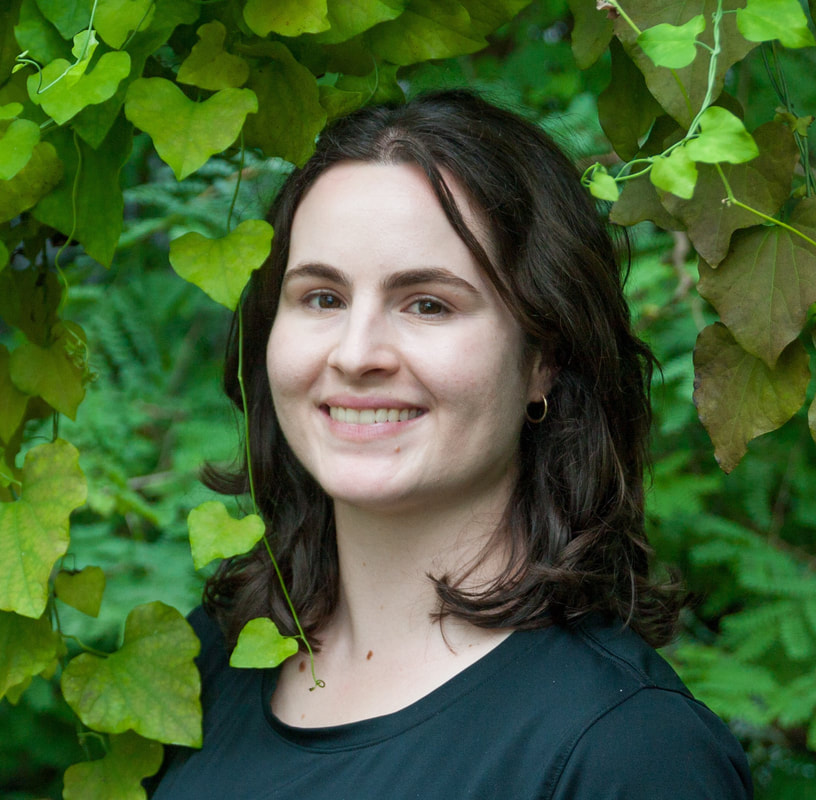
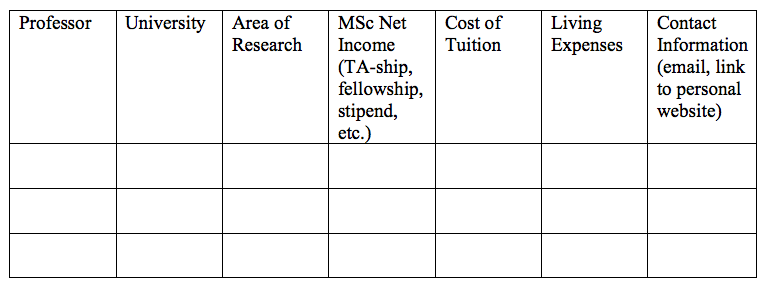
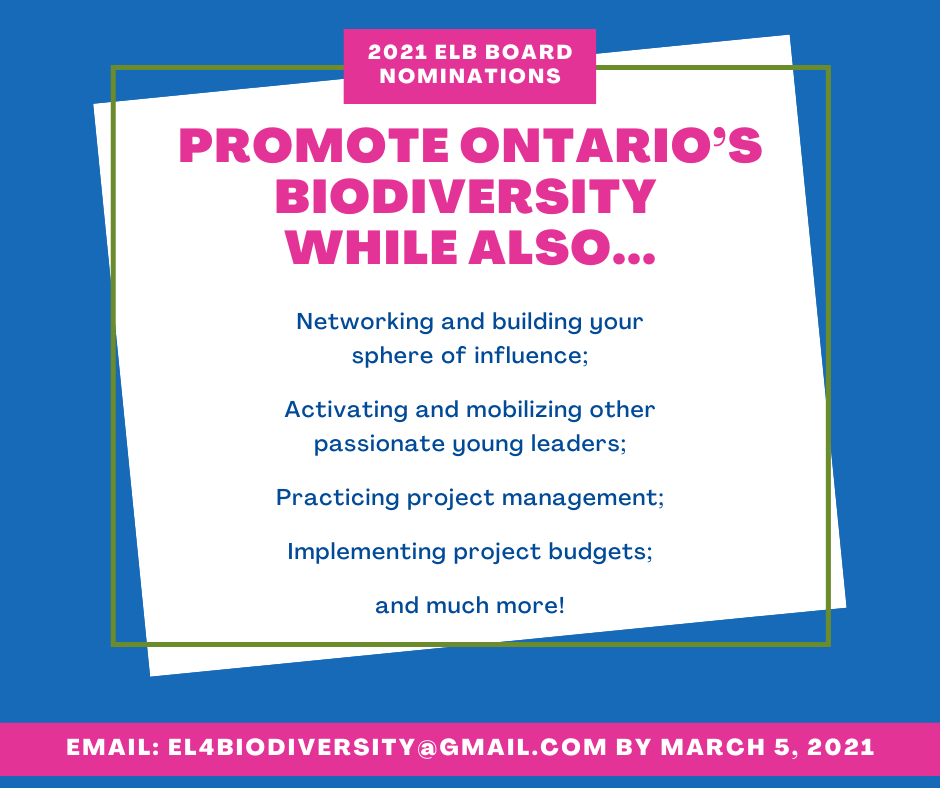

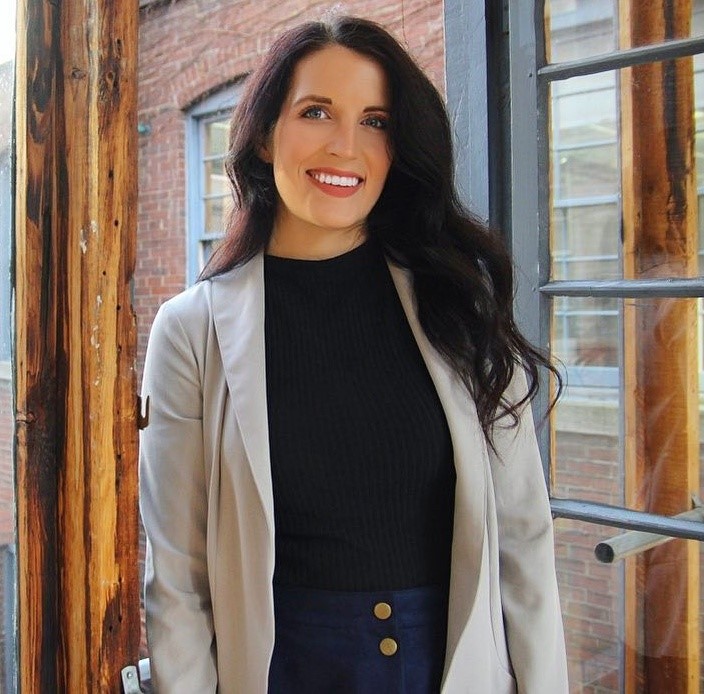
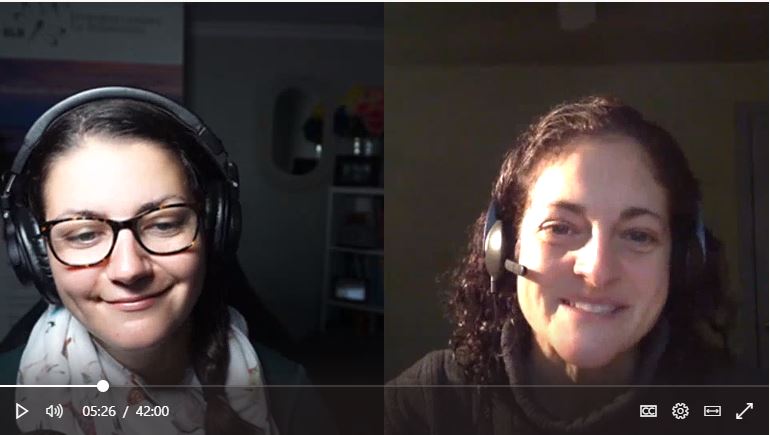
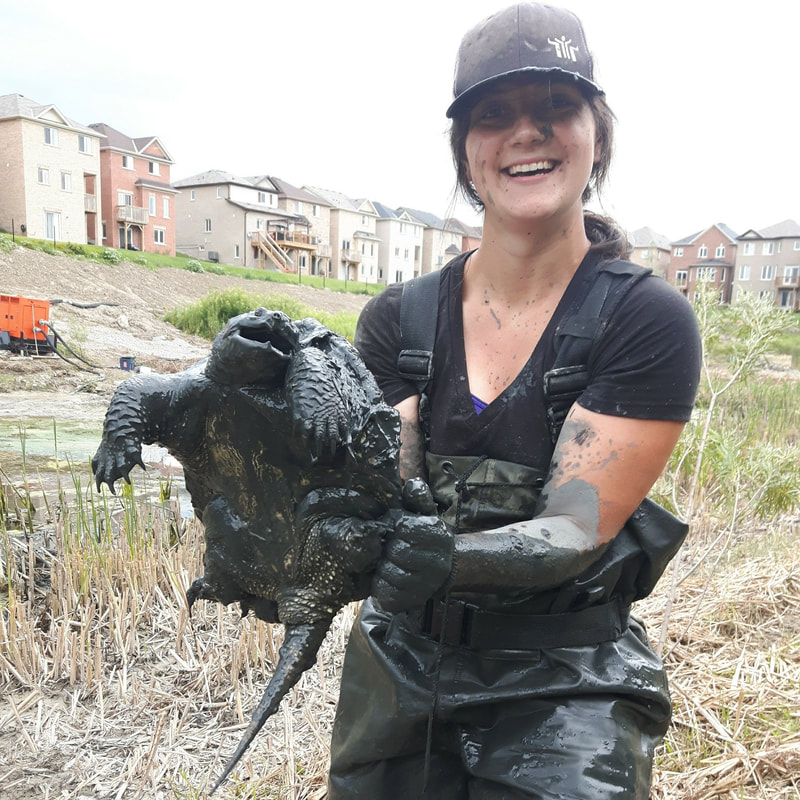
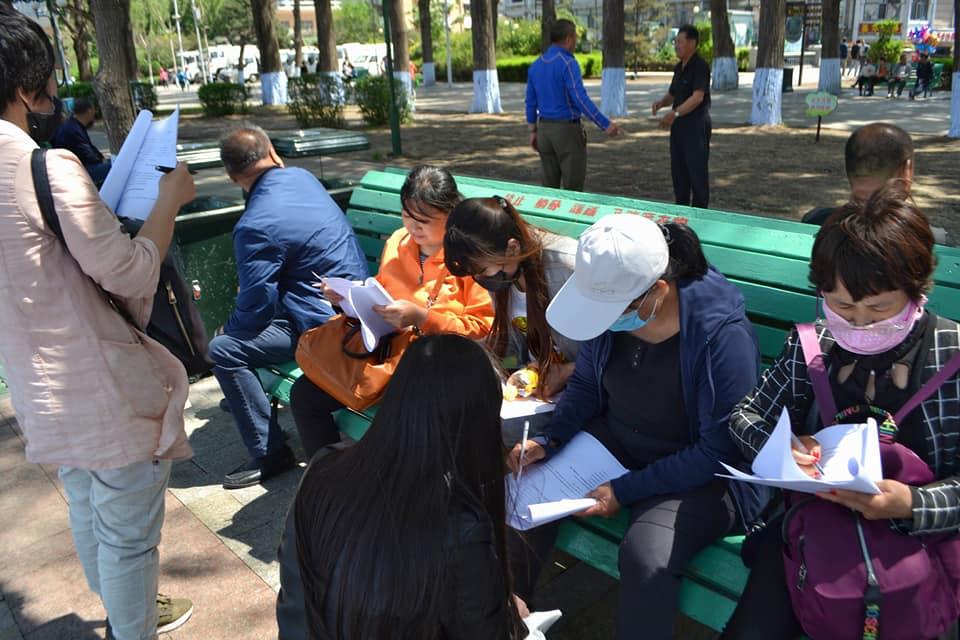
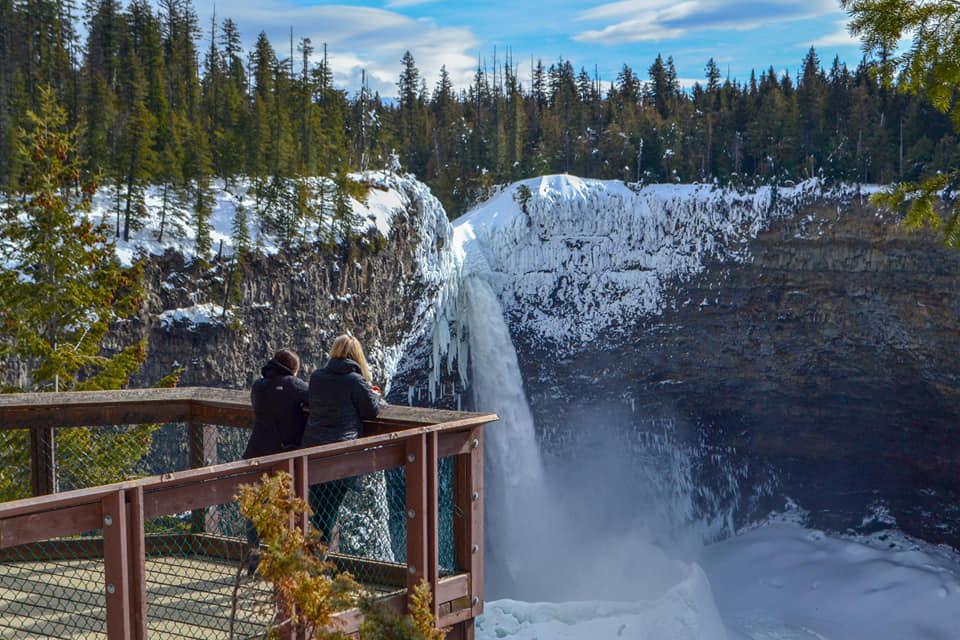
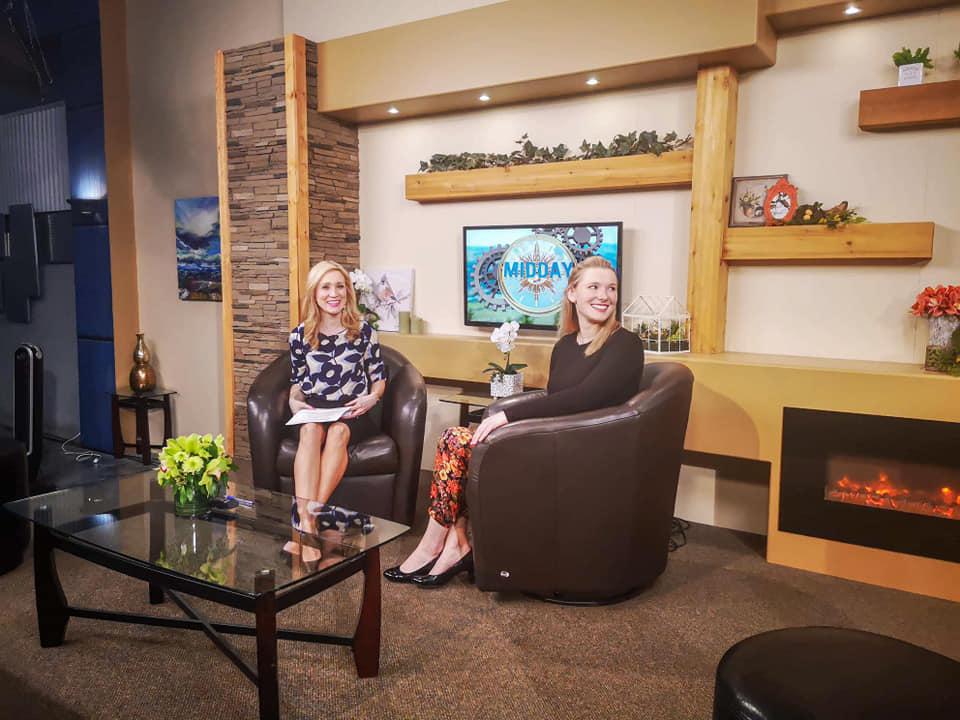
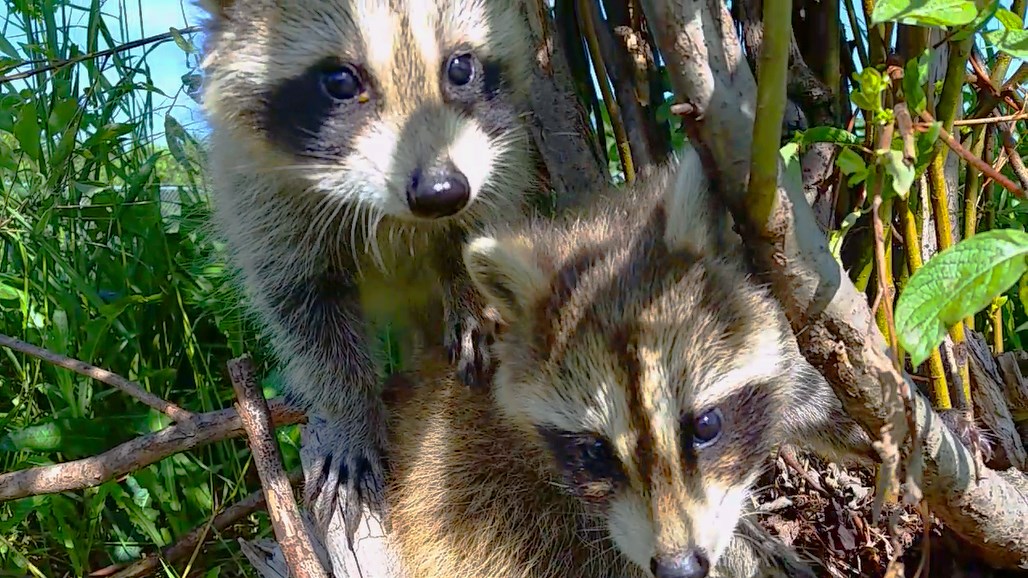


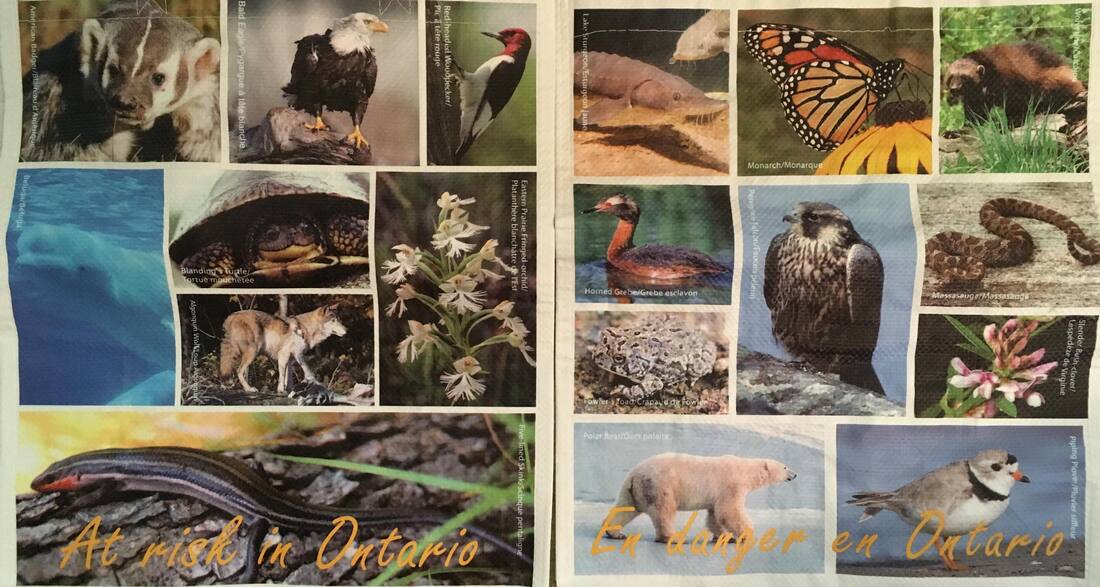

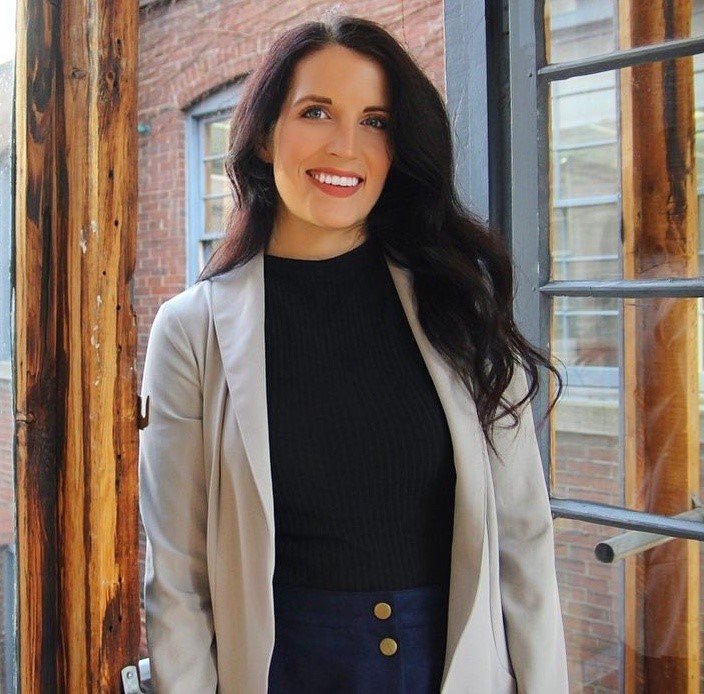
 RSS Feed
RSS Feed